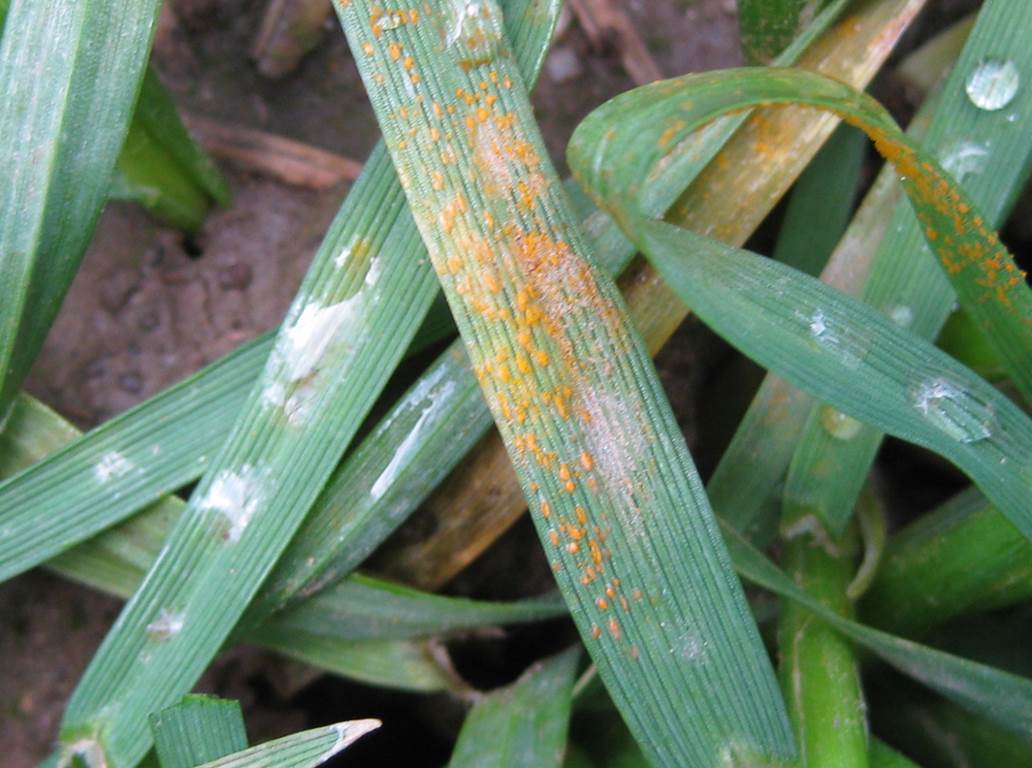Xianming Chen
Stripe rust has survived the cold February and started actively growing in many locations in the southeastern and central Washington. Yesterday, we checked wheat fields in counties of Garfield, Columbia, Walla Walla, Benton, and Adams in the State of Washington and found stripe rust in most checked fields. From Central Ferry to Walla Walla, stripe rust appeared to be more active than the rust found in the Horse Heaven Hills. Rust incidence (percentage of plants with rust) ranged from less than 1% to 5%, with field of most rust found in Walla Walla (Fig. 1). In the Horse Heaven Hills, more fields were found to have stripe rust than the last November, but generally less than 1% incidence and rust pustules were generally not actively sporulating (producing spores). In the same fields where I found stripe rust on November 9, 2010 and February 17, 2011, we found rust, but not as easy as a month ago. Rust survival was reduced by the cold period in the last week of February due to the lack of snow cover in this region. In contrast, snow cover in much of the Walla Walla and Dayton areas during that cold period might help rust survive. In a field east of the conjunction between HW 26 and HW 395 in Adams County, stripe rust was easily found even when it quite dark, although rust pustules appeared not to be very active.
A series of models using the weather data from November to February predicted yield loss on susceptible cultivars as 31% on the average, which is lower than the previous prediction of 37% based on only the December weather data. The lower prediction is due to the colder-than-normal February temperature. The relatively low temperatures since late February have slowed stripe rust developing based on the rust situation in middle February. However, stripe rust has survived and started developing in a large area in Washington. My previous recommendation is still valid. Please check your fields for stripe rust, use a full rate of fungicide mixed with herbicide at the time of herbicide application when you see rust. For moderately susceptible and susceptible cultivars, it will be better if you apply fungicide together with herbicide even you do not see rust at the time when herbicide application should be done. For spring wheat, consider planting resistant cultivars if possible.
Nationally, stripe rust has been reported in Louisiana, Texas, Oregon, and Washington. According to Dr. Jorge Dubcovsky, stripe rust has started developing in the Davis area of California.
Yesterday, we also found a couple of wheat leaves with few leaf rust pustules in the Horse Heaven Hills. In the fields where we found stem rust last November, we could not find any stem rust yesterday. Stem rust could have been completely eliminated from the fields by the winter.

Fig. 1. Actively sporulating stripe rust pustules on wheat leaves in a field in Walla Walla on March 18, 2011.